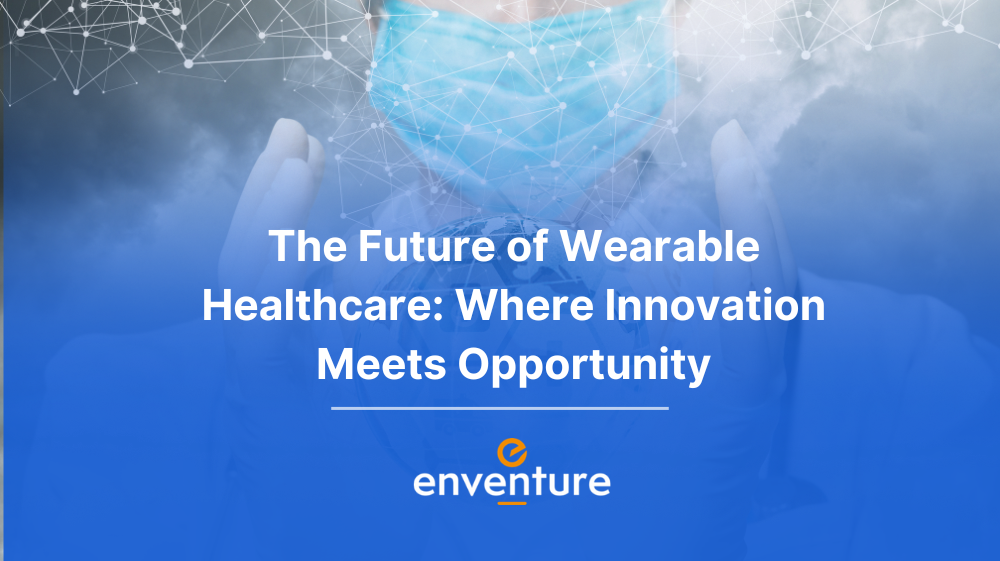Explore how wearable healthcare devices are transforming patient care and attracting investor interest, with the market projected to reach $43.3B by 2034.

The wearable healthcare devices industry is undergoing a transformation—one that's not just redefining patient care but also drawing sharp attention from investors. Valued at $19.2 billion in 2024 and projected to surge to $43.3 billion by 2034, the sector is expected to grow at a CAGR of 8.5%, according to Future Market Insights.
Behind this rapid growth is a confluence of healthcare challenges and technological breakthroughs: rising rates of chronic conditions like diabetes, a growing demand for at-home care, and increasing evidence that wearables can improve patient outcomes. Whether they track glucose, monitor heart rhythms, assess sleep quality, or provide other health-related data, wearable devices are becoming central to a more proactive and personalized healthcare system.
What Investors Are Looking For
“Emerging wearable technologies keep a constant watch on our vital signs and health parameters and bring real-time monitoring of them,” says Ankit Shrivastava, founder and managing partner at Enventure, a healthcare-focused investment firm. “AI-driven analytics on top of that generates insights from the data that can help prevent diseases, develop precise treatment plans, and enhance patient care.”
For investors like Shrivastava, the gold standard in wearable healthcare today lies in continuous monitoring, paired with actionable insights. Devices that offer more than raw data—those that interpret health signals and inform timely interventions—are proving to be especially attractive.
But insight alone isn’t enough. Shrivastava emphasizes the importance of integration. Devices must be able to plug into healthcare infrastructure, such as electronic health records (EHRs), and in many cases, come with or be eligible for current procedural terminology (CPT) codes, which facilitate reimbursement for providers.
“If providers aren’t reimbursed for incorporating wearables into care, they’re less likely to use them,” he notes. “Even the most advanced wearable won’t get traction if it’s not economically viable for healthcare systems.”
Accuracy Over Ambition
Despite the promise, accuracy remains a concern. A recent study in the American Journal of Clinical Nutrition raised red flags about the reliability of continuous glucose monitors (CGMs), pointing out that these devices often overestimate glucose concentrations and are not consistently reliable across users or contexts.
This speaks to a broader issue in the industry: devices that try to do too much, too soon. Shrivastava advises startups to focus on measuring one key health indicator accurately, rather than chasing multi-sensor complexity too early in their lifecycle. “The company that is trying to measure one thing and one thing only can be integrated into the larger portfolio of a company versus technologies that try to do too many things.”
The Privacy and Scalability Equation
As wearable devices gather increasingly sensitive data, privacy compliance is not a feature—it’s a mandate. Startups must show how they maintain HIPAA and GDPR compliance and implement rigorous data security protocols.
Equally critical is scalability. Investors with exit-driven strategies want to know whether a startup’s technology can grow into a broader healthcare ecosystem—serving not just individuals, but caregivers, providers, and health systems at large.
Shrivastava explains, “Scalability and sustainability of the business three to five years down the line are key. Does the device fit into the ecosystem of a larger medtech player like Abbott or Medtronic? Or can it create a new product line for them?”
Challenges on the Horizon
Beyond clinical validation and business fundamentals, startups must also prepare for geopolitical headwinds. Tariffs and global trade instability are shifting the investment landscape.
“If the trade war persists indefinitely, we’re not just looking at temporary disruption—we’re witnessing a structural rewrite of how global private equity operates,” Shrivastava warned in a recent Inc. article. “Supply chains will localize, global arbitrage will compress, and investment theses will shift toward resilience over scale.”
Looking Ahead
The wearable healthcare device market stands at a fascinating intersection of tech innovation, clinical necessity, and investment opportunity. For startups, the path to success is clear but narrow: prioritize one key metric, ensure data integrity, embed privacy into design, and build for scale. For investors, the opportunity lies in spotting technologies that not only monitor health—but meaningfully improve it.
As wearables become smarter, more integrated, and more essential to modern care, this is one space where health, technology, and financial returns can truly align.
Bold Moves,
Brighter Futures
Let's team up and make a difference.
Subscribe to our newsletter
Enventure is an exit-driven fund with high-yield opportunities in the healthcare, space, and green tech sectors across the US and India.
Mail Us
3103 Kewanee Ln,
Naperville, IL, 60564
Copyright © 2025 Enventure, all rights reserved.
